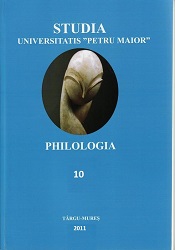Film and Identity – Ideological Representation in Lars Von Trier’s ‘Illustrations’
Film and Identity – Ideological Representation in Lars Von Trier’s ‘Illustrations’
Author(s): Ramona-Gabriela HosuSubject(s): Theatre, Dance, Performing Arts
Published by: Editura Universităţii Petru Maior
Keywords: identity; ideological representation; individualism; communitarianism; cultural politics
Summary/Abstract: Lars von Trier’s trilogy The USA: Land of Opportunities, actually consisting of two films, Dogville and Manderlay, provide interesting representations of identity in relation to ‘individualism’, ‘communitarianism’ and power. The two ‘cultural (and) filmic discourses’ provide two similar stories/histories about early twentiethcentury America, in a unique and challenging form, i.e. a play put on stage and made into film, and yet not similar to TV dramas but rather in the style of Dogme 95 so as to construct meaning and image by means of narration, themes, symbols and sheer acting and less by means of some ‘consumer’ filming techniques. Despite the evident contextualization of the two films, i.e. two places in the USA in the early decades of the 2oth century, the references are not so much to ‘an American’/the Americans but they are rather universal and addressed to humanity in general. Moreover, the films surpass not only space boundaries but also go beyond temporal references providing an image of the crisis of the sense of the individual/community/nation so much valid in the cultural politics of today, generating a universal picture of the individual’s trials to integrate in a community/nation while de/re-constructing his/her identity ‘accordingly’.
Journal: Studia Universitatis Petru Maior. Philologia
- Issue Year: 2011
- Issue No: 10
- Page Range: 194-203
- Page Count: 10
- Language: English

